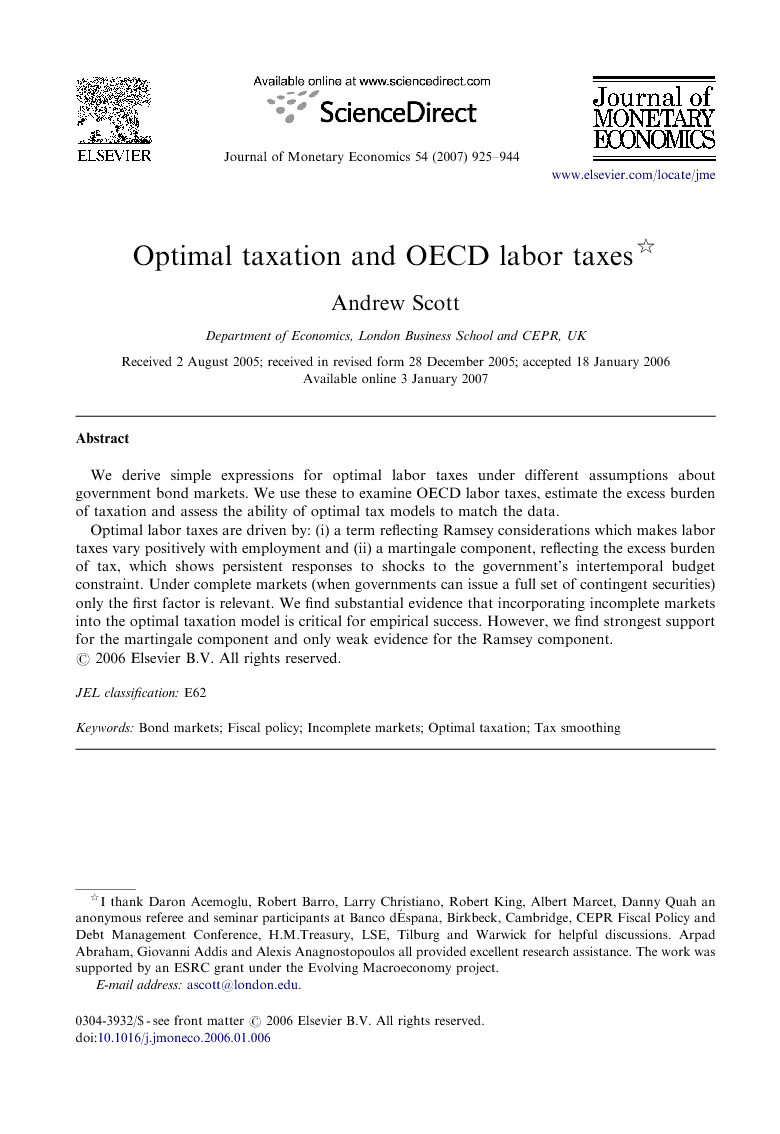ترجمه فارسی عنوان مقاله
مالیات مطلوب و مالیات کار OECD
عنوان انگلیسی
Optimal taxation and OECD labor taxes
| کد مقاله | سال انتشار | تعداد صفحات مقاله انگلیسی |
|---|---|---|
| 15254 | 2007 | 20 صفحه PDF |
منبع

Publisher : Elsevier - Science Direct (الزویر - ساینس دایرکت)
Journal : Journal of Monetary Economics, Volume 54, Issue 3, April 2007, Pages 925–944
ترجمه کلمات کلیدی
بازار اوراق قرضه - سیاست مالی - بازارهای ناقص - مالیات مطلوب - صاف کردن مالیات
کلمات کلیدی انگلیسی
Bond markets, Fiscal policy, Incomplete markets, Optimal taxation, Tax smoothing,

